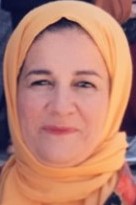The design of science-art interactive experiences is a combination that explores the multiple contexts of science and aims at drawing attention to science as part of people’s daily life and to art as an open dialogue non-exclusive to artists and art communities. Science provides the wide spectrum of art methods, material, and tools; while art is a strong medium for understanding and expression.
At the Science Studio, we design such activities to provide our audiences with integrative experiences; they are part of our exhibitions, festivals, public events, and teacher empowerment programs. We are building a professional experience on designing activities that can preserve the identity of both art and science in terms of content and procedure, and at the same time communicate science and draw attention to art.
Designing art-science learning experiences is a deep thinking process that involves analysis of a content, its relevant contexts, art elements, art concepts, and tools, finding common factors that can draw a path of experiences. These experience paths are diverse and depend on the science content and art form chosen; each path achieves a different level of learning, expression of understanding, and degree of creativity.
Facilitation is a challenge. The science and art processes and the relevance of their tools, material, and layout to science content and art concept chosen create a successful design that will contribute to the “physical” form of facilitation. The activities allow different outcomes; each artifact is a demonstration of the participant’s learning, understanding, and skills. Both the physical and interactive forms of facilitation contributed by the design and implementers ensure proper scaffolding.
Moderator:

Samar Darwish Kirresh
Qattan Foundation
PALESTINE